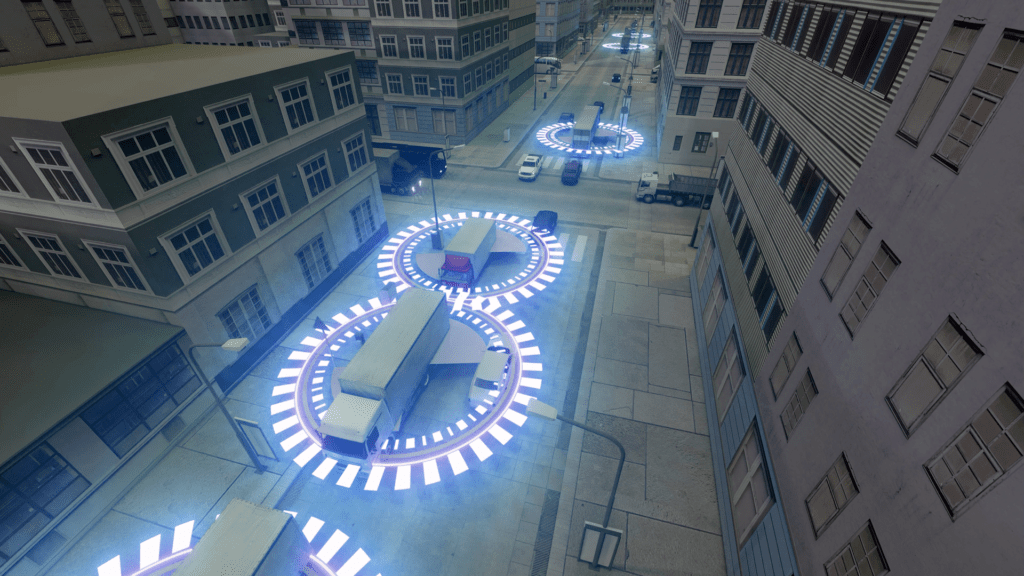
The Business cases and initial value network deliverable, developed under the leadership of the HZ University of Applied Sciences, provides an overview of the requirements for teleoperated transport in logistics operations and offers an in-depth assessment of business cases for teleoperated transport in logistics operations. It serves as a basis for the development of 5G business cases and models for teleoperated transport in cross-border operations. The document has been developed as part of the work package dedicated to defining and evaluating 5G-enabled CAM business cases (from both qualitative and quantitative perspectives) and providing recommendations based on business and governance models for optimal deployment.
The authors of the study proposed, analysed, and validated different business model configurations. Due to the scarcity of literature on the deployment of teleoperated vehicles in logistics or large fleet operations, they adopted an explorative approach to describe the relevant economic, technological, and organizational issues that need to be considered in the design, development, and operations of teleoperated transport in logistics. The explorative methodology they applied in this research consisted of five main steps.
Explorative interviews
To identify which challenges and organizational issues are the most crucial for the deployment of teleoperated transport systems in logistics operations, the authors of the study held explorative interviews with experts and professionals in the field.
Selection of topics
To get a better understanding of the impact an introduction of teleoperated driving would have on the current logistics operations and to identify the impacts on business models and business cases of logistics companies, the authors selected three main topics for a more detailed analysis. These include the impact of teleoperated driving on current driver tasks and responsibilities, allocation of these tasks and responsibilities to other stakeholders, and planning of teleoperated driving with respect to the vehicle and teleoperator allocation.
Development of tools
The insights provided by the study led to the development of three distinct tools, namely a business case model that allows transport operators to compare the operational costs of a traditional logistics company with that of a company using teleoperated vehicles; an organizational model; and an initial value network model.
Generalization
The findings of the first three research steps regarding teleoperated road transport for goods have been generalized for barge and passenger transport. The purpose of this step was to distinguish which findings and issues are field-specific.
Drawing conclusions
As a result of the aforementioned steps, the authors came to several conclusions.
Firstly, they confirmed that teleoperation is of interest to the logistics industry primarily because it leads to an increase in the productivity of drivers and trucks. With teleoperation, trucks can be used more effectively and efficiently because their deployment is not limited to timewise. The gain in productivity is especially significant in logistics operations with long waiting times, long loading/unloading times, and/or in long haul international transports. Also, the possibility of deploying a driver onto another vehicle once the vehicle they originally operated goes to a standstill means that operators could support a fleet of vehicles that is larger than the operators’ group. Furthermore, the simulation of a synthetic case study with 450 vehicles showed that the TO/V ratio decreases as the number of vehicles increases, meaning that teleoperation will be more cost-effective for companies managing larger fleets than companies operating smaller fleets. This implies that the traditional owner-operators or other SMEs operating a small number of trucks contracted by larger logistics service provides could be vulnerable if large companies start exploiting these economies of scale with new business models that focus on teleoperated driving.
Secondly, the study demonstrated that not all driver activities can be executed by teleoperators. While some activities can be automated (e.g., opening and closing of doors, connecting trailers) or digitized (e.g., waybills), in some cases local presence is still required (e.g., to perform physical checks on the cargo or vehicle). The contractual arrangements required for the transfer of responsibilities for safe loading and lashing of the cargo need further investigation.
Regarding barge transportation, teleoperation technology is already commercially available in the Netherlands and Belgium. The main barrier to the deployment of commercial services is the law that currently prohibits sailing without a captain or shipper physically present on the ship. The costs and benefits of teleoperated barging are different compared to road transport because of the differences in waiting and (un)loading times and because fitting the teleoperation kit to a vessel takes more effort, partly because of the diversity in ship designs and age.
Last but not least, the study investigated the introduction of teleoperation in passenger transport, more specifically in taxi and bus services. The business case for taxi services looks promising since waiting for new clients represents a significant share of the driver’s daily activities. However, teleoperation in public bus transport does not seem to provide significant benefits as waiting times and times needed for entry and exit of passengers are generally much shorter than for road transport and taxi services.
If you are interested in discovering more, you can find the full document on the project website.

